Özge Şengelen
ISTANBUL: Gölyazı, a witness to so much history floating on Lake Uluabat, a place 17th-century Ottoman explorer Evliya Çelebi raves about in his ‘Book of Travel,’ is one of the most beautiful routes to visit in autumn in Türkiye
Gölyazı is an ancient settlement in Türkiye’s Bursa that can serve as a wonderful autumn escape. The small peninsula located on Lake Uluabat, connected to the mainland by a thin bridge in the Nilüfer district, is about one hour west of Bursa’s center and approximately three hours from Istanbul. Gölyazı is also almost a stone’s throw away from other touristic places around Iznik, Cumalıkızık and less than an hour from Trilye. So, if you fancy a trip to Gölyazı, the surrounding Iznik – the second capital of the Ottoman Empire – Cumalıkızık and Trilye could also add another dimension to your route.
I cannot begin to discuss the history of Gölyazı as the settlement dates back to ancient times. Gölyazi, which was ruled by the Byzantine Empire and later the Ottomans, was as a small Greek fishing village until the population exchange following the War of Independence in 1923. After the population exchange, Turks from Thessaloniki (Salonica) settled there.
In Gölyazı, you can see the marks of ancient times, as well as the traces of the Roman, Byzantine and Ottoman periods. You can also see the ruins of the Temple of Apollo in Gölyazı, a town whose ancient name was Apolyont or Apollonia ad Rhyndacum – meaning Apollonia on the River Rhyndacus.
Like every historical town, Gölyazı also has a story associated with it. According to rumors, the prince of Melde from the neighboring kingdom of Apolyont fell in love with the daughter of the former ruler of Apolyont, the king of Apollonia. However, when the princess does not want to marry the prince, her father, the king of Apollonia, builds a palace on the shore of Lake Apolyont and hides his daughter there. The king of Melde is extremely angered by this and consequently changes the course of today’s Mustafakemalpaşa River and floods Apollonia. However, the palace where the king’s daughter hid remains as an island surrounded by water. It is said that the Gölyazı peninsula emerged with this love story and the whole history still lies beneath the waters.
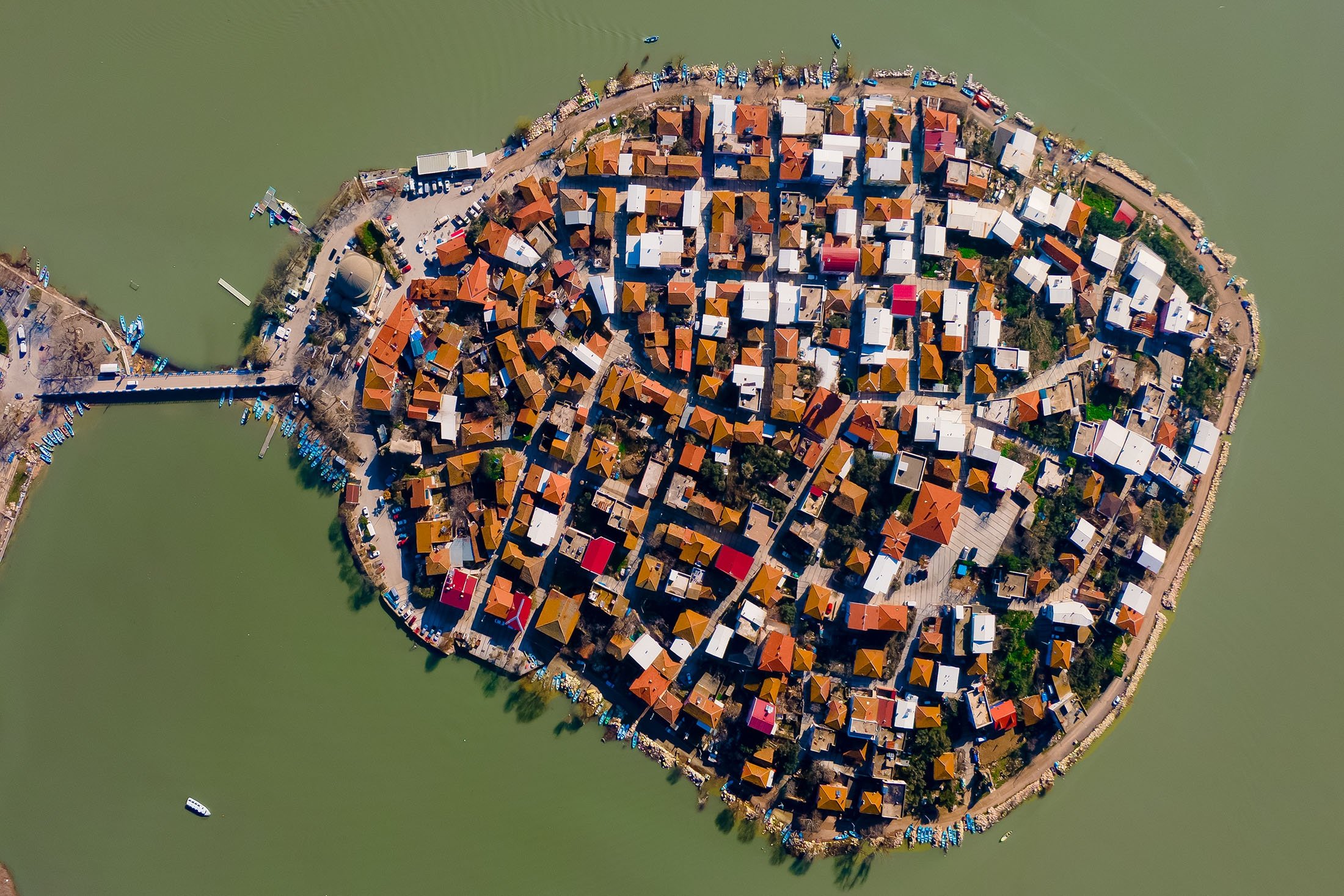
Coffee at weeping plane tree
If you ever come to Gölyazı, you have to meet its oldest inhabitant. As you sit and rest in its shade, it feels as though this ancient tree may tell you a story at any moment with all the wisdom it holds. Although the exact age of the historical plane tree is not known, it is clear that it has withstood centuries.
There is also a sad story associated with the plane tree, which is called the weeping plane because of the drops dripping down from its hollow. According to the rumor, during the years when Greeks and Turks lived together in Gölyazı, a Turkish teenager named Mehmet and a Greek girl called Eleni fell in love with each other. After the 1923 Turkish War of Independence, Greek families returned to Greece with the population exchange between Greece and Türkiye. Of course, among them were Eleni and her family. As the Greeks left the village, an argument broke out between Eleni’s older brother and Mehmet. Eleni’s big brother Yorgi tells Mehmet that the family is leaving and that he should give up on this love. During the argument, Yorgi draws his dagger and stabs Mehmet. Using all his might, Mehmet manages to make his way to the plane tree, where he used to secretly meet with Eleni, and lies beneath its hollow. Eleni leaves her family and also heads to the plane tree. When she gets there, she sees Mehmet covered in blood and hangs herself from the tree with the belt from his waist. It is rumored that since that day, bloody tears flow from the hollow of the old plane tree as it weeps for these two young people.
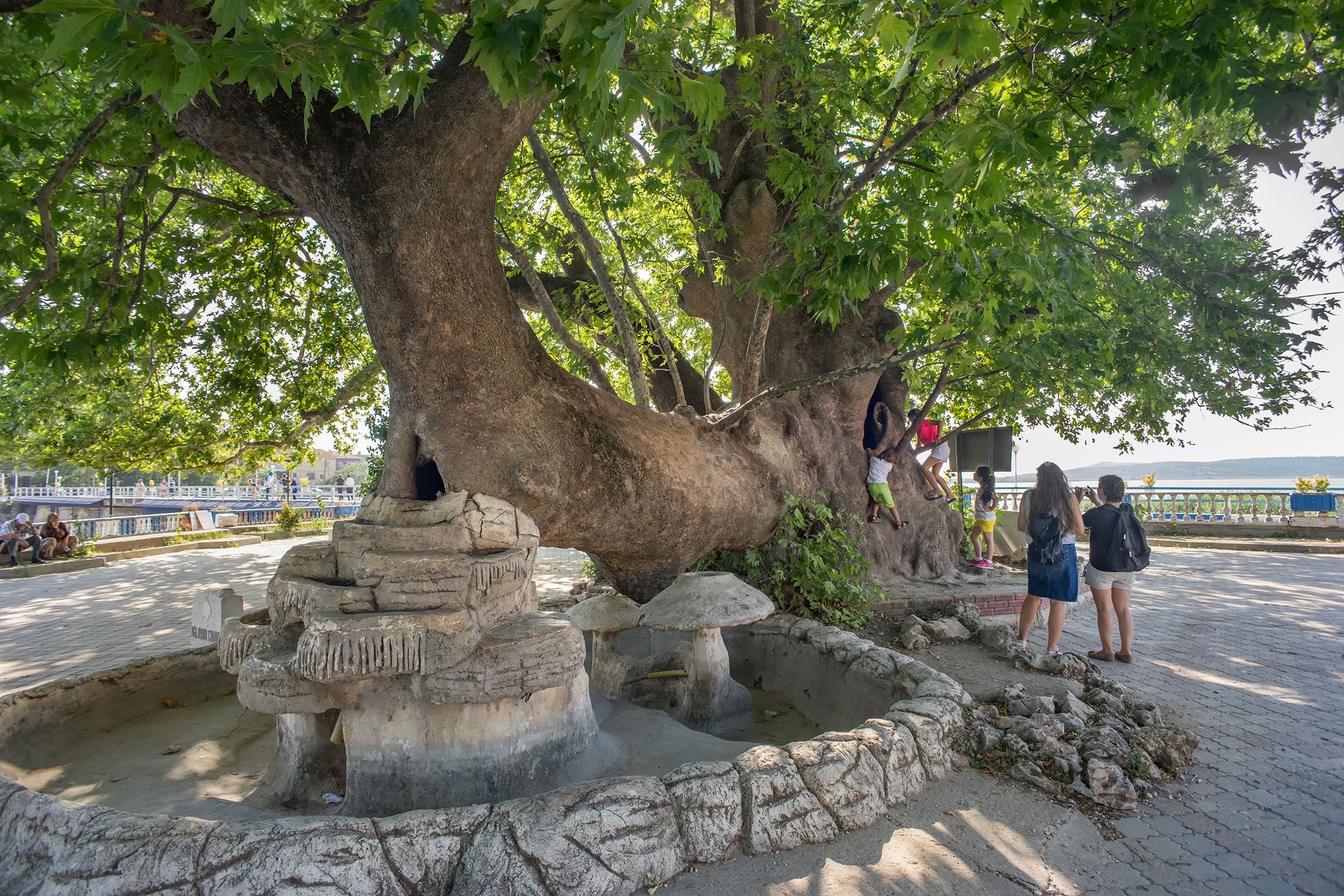
There is of course a scientific explanation behind the tree’s weeping.
Natural spring water seeps out from the hollow in the trunk of the old plane tree, whose roots reach the lake, especially in the spring season when the lake waters rise. This could be considered a possible scientific explanation. However, there is this: Scientifically, the water flowing from the tree should not be red in color. This is the only instance where a tree weeps red lake waters, thus even the science appears to confirm the legend that emerged from the sad love story.
Whatever the truth may be, this tree, which has witnessed a whole history, is very precious and definitely worth seeing. You should definitely visit this tree in the shade of which you can sip your tea or coffee and take a breather. Finally, under the Weeping Plane Tree sign, you will see the verses of Mehmet Okatan, who actually gave the tree its name. These meaningful lines he wrote about the tree also impressed me a lot.
“A great plane tree lying on its side with the tiredness of history… However, it did not give up on the hope of living, but lay down, its heart is so burned, its leaves are sad, its inside is almost bloodied as if it is an interpreter of wars, pains and blind loves, with a love garden, an unblossomed rosebud behind, a whole lake of tears in front.”
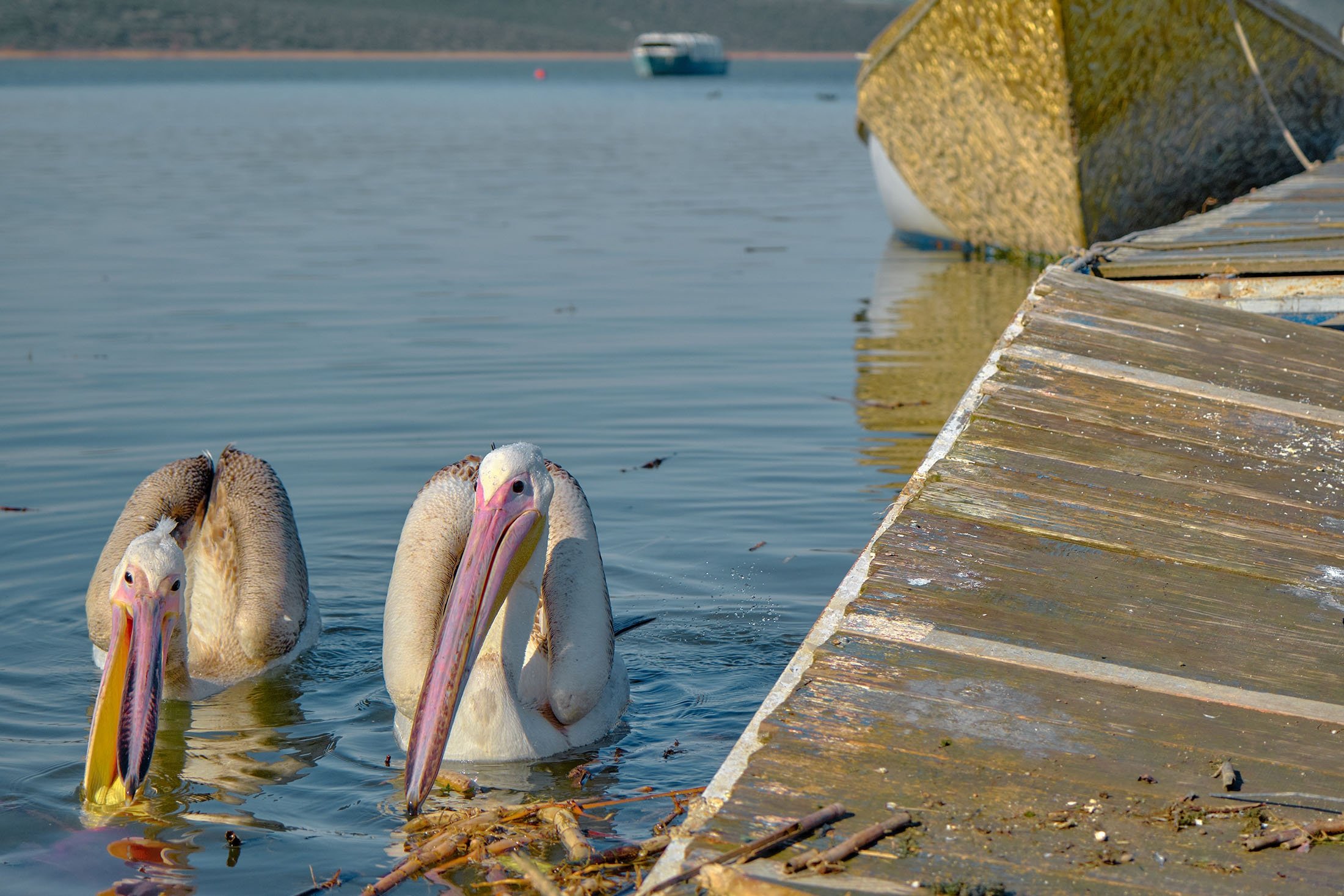
Migration path of storks
They always say that when you see storks in the air, you will travel a lot that year. Gölyazı is a place where you can see storks everywhere on land and in the air if you are there in the right season. The Uluabat Lake is a paradise for storks as it is on the migration route of the beautiful birds. The same is the case in Eskikaraağaç, a village adjacent to Gölyazı. So much so that the village also goes by the name Stork Village. There are even Stork Festivals held there. These festivals are held in May every year in the village, which is the first and only stork village in Türkiye and the 11th in Europe. If you coincide your trip with this time of year, you can both attend the festivities and see a lot of storks on land, in the air, and just maybe you will have a year with lots of travel.
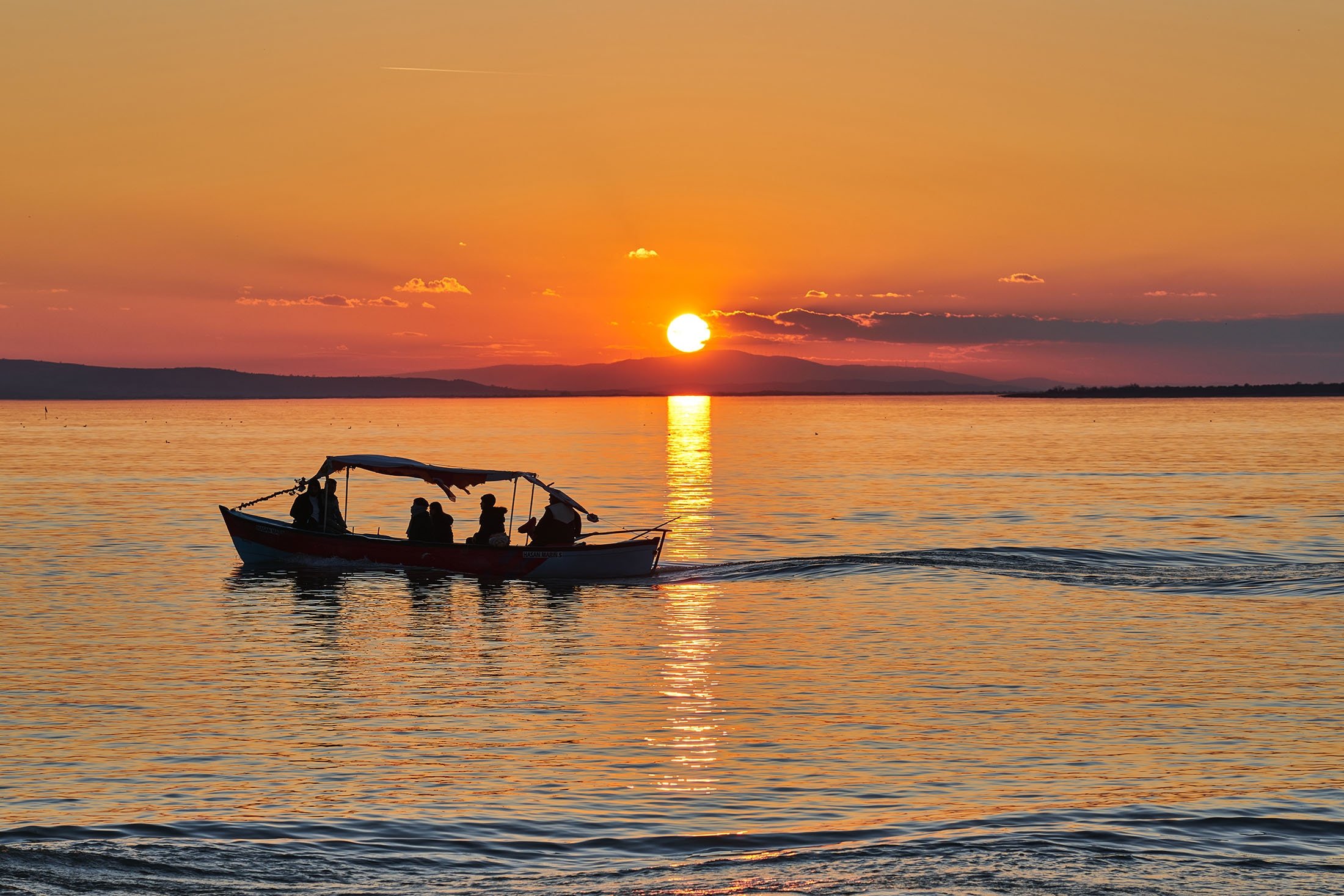
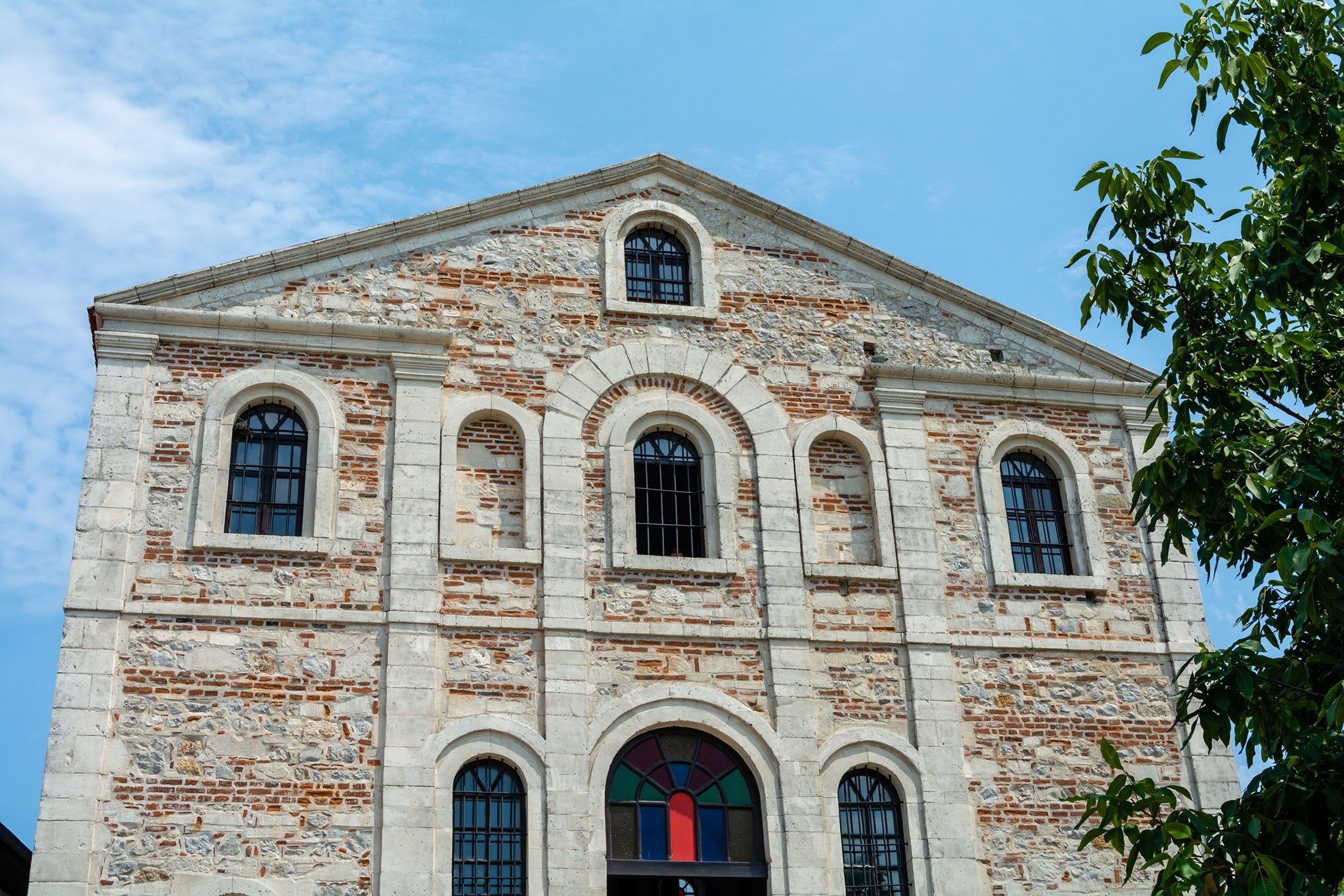
You can start the day with a nice breakfast with a wonderful lake view in Gölyazı. Also, one of the best activities you can do here is to take boat tours on the lake. You can also take a short trip on the lake by renting one of the rowing boats along the shore. Apart from this peninsula, there are 11 other islands on the lake. You can go to the nearby ones during the boat tour.
The most enjoyable moment during the boat trip could be when you encounter lotus flowers. You won’t be able to stop photographing these delicate flowers that wink at you on the water. However, it is worth remembering, for those who want to see these wonderful flowers on Uluabat Lake, that the lotus flowers open up at 9 a.m. in the morning from May to November and they shut their leafy curtains towards the evening.
Although there is urbanization in Gölyazı, some of the traditional houses still stand. At the end of the streets that take you to the lake, the boats on the shore and men and women repairing fishing nets give you the island atmosphere to the fullest.

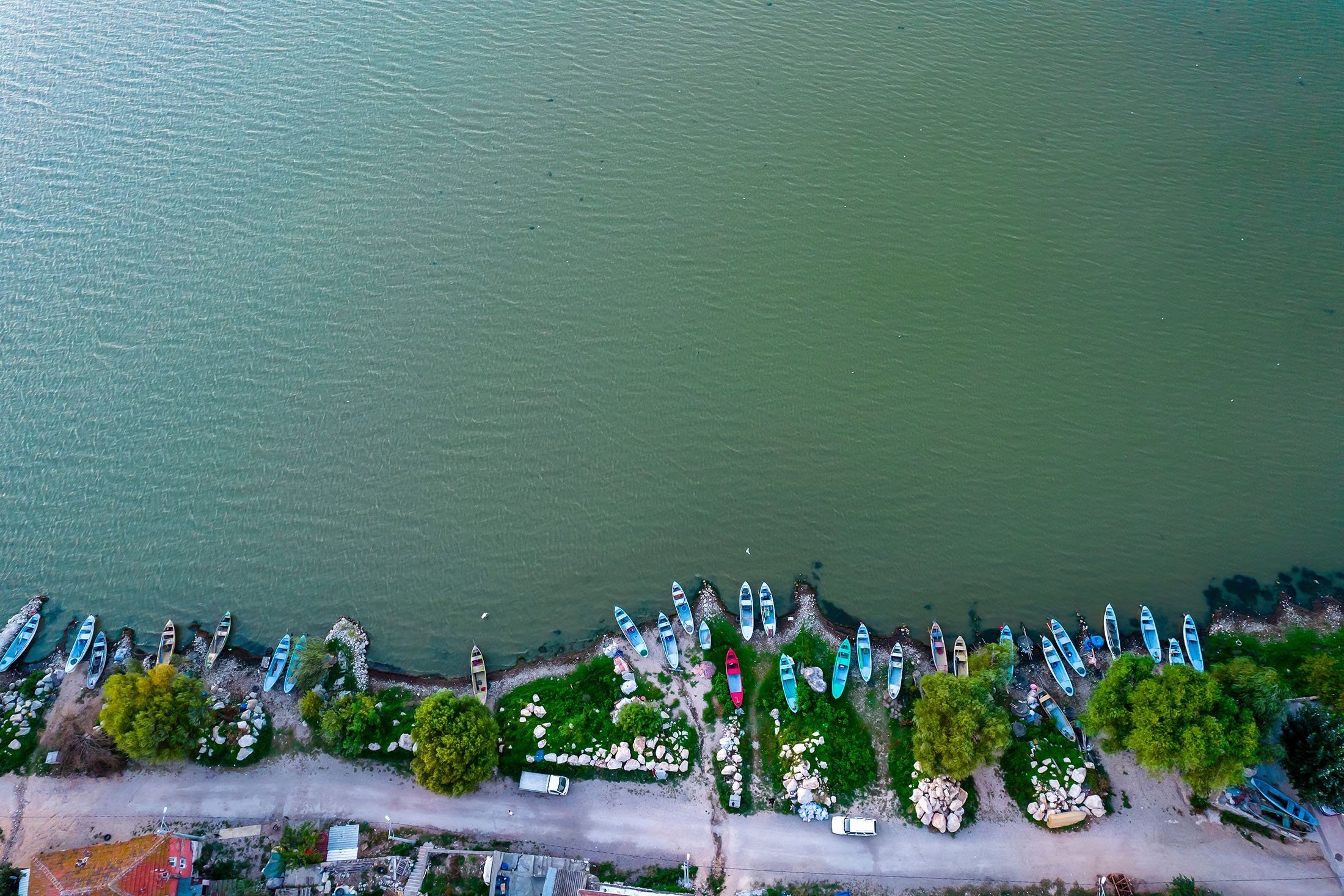
You can find the people of Gölyazı, who make most of their livelihood by fishing, on any street weaving nets. Although the lake is not as fertile as it used to be, it hosts different fish species such as cranes and common roach fish. It is said that crayfish, which had become the symbol of the lake due to their abundance in ancient times, is not so commonly found in lake anymore. If it were up to me, it should not be eaten even if it is found so that it does not become extinct. Another source of income in Gölyazı is olive cultivation. If you go to Gölyazı in November, you can see the olive harvest.
While you are on the island, you can finish the day by watching the sunset at Zambak Tepe after you eat delicious fish for dinner.
You can also see the ancient ruins, the mosque from the Ottoman period and the Church of Saint Panteleimon from the Greek period, which is now used as a cultural center.
Gölyazı is like an open-air museum waiting to be discovered with its legends, heritages from different civilizations, old Greek houses, storks and water lilies. The peninsula, which can be a wonderful autumn route, awaits visitors.
Courtesy: Dailysabah






